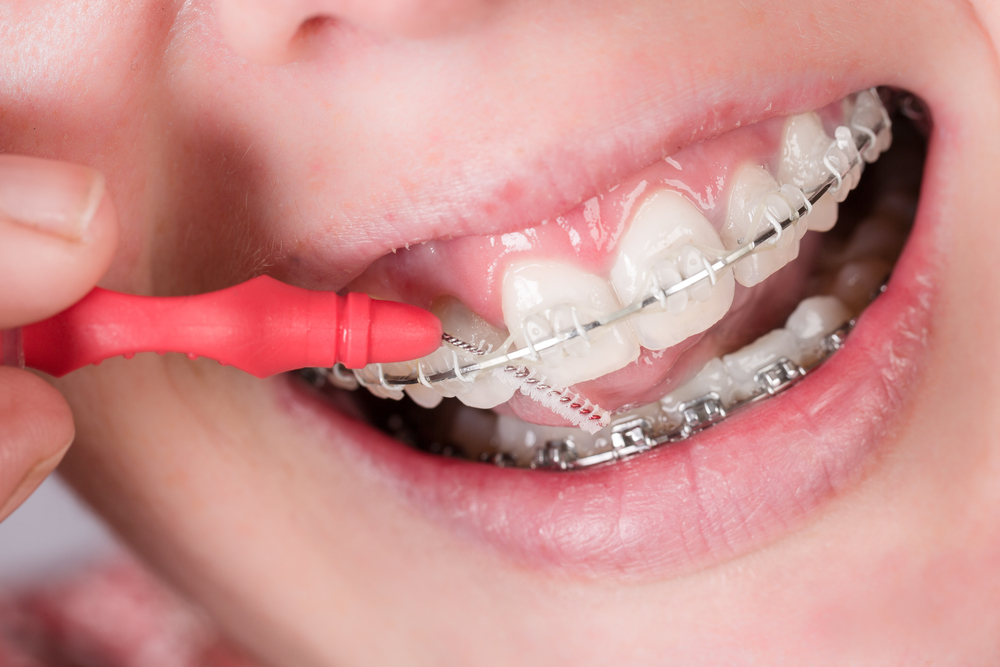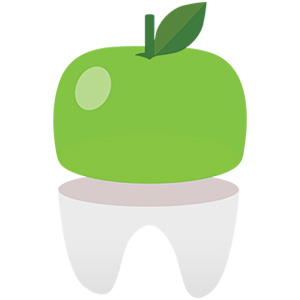
Fighting Bad Breath With Braces or Invisalign:
Your braces or clear aligners are doing their thing, your teeth are shifting into place, and your sweet, new smile is taking shape but there’s just one problem: You have a case of dragon breath. Well, it happens, even when you’re not in orthodontic treatment, but clear aligners and braces appliances can make you more susceptible to bad breath if you don’t give them the TLC they deserve. The good news is, fighting bad breath with braces and Invisalign is simple.
To help, I’m sharing what causes bad breath during orthodontic treatment, as well as the tips I give my Brooklyn braces and Invisalign patients for keeping their mouth healthy and odor-free.
Do Braces Cause Bad Breath?
Braces appliances themselves don’t cause bad breath, as in it’s not the metal or ceramic material giving off a weird smell. However, braces involve brackets and wires that are bonded to your teeth. This hardware gives plaque more places to hide. Plaque is a sticky film made up of bacteria, and these bacteria can create odors when they’re not brushed or flossed away. Aside from the plaque on your teeth, another instance where braces cause bad breath is when food gets caught in your appliance and is left there, especially if it’s a notoriously stinky food like onions or garlic.
While I have to say, the vast majority of my Brooklyn braces patients are oral hygiene superheroes, not everyone is as diligent about brushing and flossing with braces. Eventually, in extreme cases, this can lead to tooth decay (cavities) and gum disease. Infections in the mouth, including the aforementioned decay and gum disease, are one of the common causes of bad breath with braces or not.
Why Do I Have Bad Breath With Invisalign?
A main difference between clear aligners and braces appliances are clear aligners like Invisalign and Invisalign Teen don’t consist of brackets and wires. Instead, I design your treatment plan on a computerized, 3D model of your mouth and custom, removable, plastic aligners are created based on my specifications. The aligners slip over your teeth sort of like a super comfortable, virtually invisible mouthguard.
Since the aligners are removable, brushing and flossing is a breeze and doesn’t require any fancy maneuvers or tools. So, why would you have bad breath with Invisalign if you’re able to easily keep your teeth squeaky clean? There are a number of reasons why you can have bad Invisalign breath, including:
- Forgetting to take your aligners out before meals: It’s important to keep in mind that you should remove your aligners before meals and snacks. Patients sometimes ask, can you drink with Invisalign? The answer is, you can drink with Invisalign but you need to take your aligners out first before having any beverages aside from plain water. If you eat or drink with Invisalign aligners in your mouth, the food or liquid can get trapped between your aligners and your teeth. The bacteria in your mouth will have a feeding frenzy since your saliva can’t effectively neutralize things with your aligners in the way, which can cause bad breath with Invisalign.
- Not brushing your teeth and cleaning your aligners after eating or drinking: After eating or drinking, you should brush your teeth (or at least rinse your mouth out really well with water if you forget your toothbrush) and rinse your aligners before putting them back in your mouth. Again, any food or beverage residue that’s lingering on your teeth and is not washed away will get stuck between your aligners and your teeth. This will increase your risk of tooth decay and gum disease and, as we know, infections like this are causes of bad breath, as are leftover food particles.
- Dry mouth: Another common cause of bad breath in general is dry mouth and some patients find they have dry mouth with Invisalign, particularly when they first start treatment. Saliva is super important for neutralizing those odor-causing bacteria, washing away food particles, and preventing cavities and other infections, which are all tied to bad breath.
- Dirty aligners: Lastly, if plaque, spit, and bacteria build up on your Invisalign aligners, they can start to smell. When your Invisalign aligners stink, it will cause your breath to stink too.
How to Prevent Bad Breath With Braces or Invisalign
Now that you know the causes, you’re probably wondering how to prevent bad breath with Invisalign or braces. As promised, here are 12 tips for fighting bad breath during orthodontic treatment:
- Up Your Brushing Game
Brushing your teeth with braces and during Invisalign treatment is crucial. Teeth move most effectively in a healthy mouth and getting cavities or gum disease can set your treatment back. Beyond that, brushing your teeth regularly is the easiest way to prevent bad breath with braces or Invisalign since it will eliminate odor-causing bacteria, plaque, and food debris. Whether you have braces or clear aligners, brush your teeth in the morning, after meals and snacks, and before bed using fluoride toothpaste.
- Floss At Least Once Daily
Flossing at least once a day during your orthodontic treatment is another essential way to kick bad breath to the curb. Flossing gets rid of plaque and food particles in between your teeth and at the gumline that your toothbrush can’t reach. It’s also important for preventing infections, such as gum disease, that can lead to bad breath. During Invisalign treatment, you’ll floss the same way you always did. As for how to floss with braces, using a floss threader or orthodontic flosser will make the process easier.
- Use a Proxabrush for Tight Spaces
An interproximal brush, also called a proxabrush, proxybrush, or interdental brush, is incredibly useful for cleaning around braces appliances and getting into the tight spaces that are hard to reach otherwise. This will help you eliminate sneaky plaque and dislodge pieces of food to prevent or get rid of bad breath with braces.
- Consider a Waterpik
You can absolutely use a waterpik for braces. In fact, my team and I recommend it. A waterpik, or water flosser, is excellent for getting your gums clean, removing plaque, and loosening stubborn bits of food that are stuck in your brackets and wires, which will also fight bad breath. When using a waterpik for braces, keep in mind that it doesn’t replace regular flossing. You’ll want to use your water flosser in addition to your conventional dental floss. Most of our Brooklyn braces patients think the extra step is well worth it. It’s also a good tool for Invisalign patients too since having healthy teeth and gums will reduce the chances of developing bad breath.
- Embrace Mouthwash
If you’ve been brushing and flossing like a champ and still have bad breath with Invisalign or braces, consider adding a mouth rinse to your oral hygiene routine. An antibacterial or antimicrobial mouth rinse with fluoride is your best bet. It will help to zap odor-causing bacteria and ward off cavities and other oral health concerns that can create less-than-stellar breath. Swish it in your mouth twice a day for about 60 seconds and then spit it out.
- Learn How to Clean Invisalign Aligners Properly
Your Invisalign or Invisalign Teen aligners are in your mouth for about 22 hours per day, so anything that would normally adhere to your teeth (i.e., spit, bacteria, plaque, etc.) will adhere to your aligners. When plaque and spit build up on your aligners, not only will they look cloudy, they’ll also start to smell, which can cause bad breath. Knowing how to clean Invisalign trays is an important way to prevent bad odors.
As for how to clean Invisalign, the easiest method is to gently brush your aligners with a soft-bristled toothbrush every time you brush your teeth and then rinse the aligners with lukewarm water. Skip the toothpaste as it can cause scratches and discoloration of the aligners. If you don’t have a toothbrush on hand, rinse your aligners off with water whenever you take them out and before putting them back in. Brush them the next time you brush your pearly whites.
If brushing your aligners doesn’t get rid of all of the bad smells, you can deep clean Invisalign aligners every so often to get them really fresh. Use the Invisalign cleaning crystals or denture cleaning tablets. You can also take a DIY approach and clean Invisalign with hydrogen peroxide. Mix equal parts hydrogen peroxide with warm (not hot) water in a container. Drop your aligners in the container and let them soak for about 30 minutes. When you take them out, they’ll be clean, deodorized, and disinfected.
- Take Your Aligners Out Before Eating or Drinking.
There are no food restrictions with Invisalign. That being said, you shouldn’t eat or drink with Invisalign aligners in your mouth. Take your aligners out before eating or drinking anything aside from plain water. This will ensure food and liquid don’t get trapped against your teeth and cause bad breath or, worse, cavities.
- Visit Your General Dentist Regularly for Professional Cleanings and Exams
Yup, you’ll still need to see your general dentist during orthodontic treatment and it’s a key way to prevent bad breath with Invisalign or braces. Your dentist will ensure your teeth and gums are healthy and that you’re cavity-free, which will help in the breath department. During professional dental cleanings, they’ll also remove hardened plaque, or tartar, that you can’t eliminate on your own with a regular old toothbrush, including stubborn deposits around your braces brackets.
- Eat a Healthy Diet and Watch Those Smelly Foods
Eating a well-rounded diet that’s full of foods that strengthen teeth and gums will help fight bad breath with braces or Invisalign. Eating healthy, nutrient-dense food and enjoying sugary drinks and treats in moderation will reduce your risk of tooth decay and gum disease. Plus, certain foods can neutralize that odor-causing bacteria. You can also try to stay away from pungent foods that cause bad breath, such as garlic and onions, if you’re really concerned.
- Drink Plenty of Water
Staying hydrated by drinking an adequate amount of water will prevent dry mouth by encouraging the flow of saliva. The water will also wash away bacteria and food debris. This will keep your breath fresh and your teeth and gums healthy. Since plain water is the one thing you can drink with Invisalign aligners in, staying hydrated is something both braces and clear aligners patients can easily achieve!
- Enjoy a Piece of Sugar-Free Gum After Meals
Chewing sugar-free gum, especially gum with xylitol, has oral health benefits, including stimulating saliva, which as we noted above, is important for fighting a number of the causes of bad breath. Of course, you can have gum with Invisalign since the aligners are removable but you’re probably wondering, can you chew gum with braces, too?
You can chew gum with braces as long as it’s sugar-free. Sugarless gum is less sticky and research suggests, in addition to the breath benefits, chewing on it can actually help alleviate discomfort when you first get your braces put on and after adjustments. If you find it’s sticking to your appliance, try switching brands.
- Reach Out for Help if Your Bad Breath With Braces or Invisalign Continues
If you’ve been practicing good oral hygiene, cleaning your aligners, seeing your dentist, eating healthy, and staying hydrated and you still have bad breath with Invisalign or braces, it could be an indication of a problem. Talk to me when you come in for your next appointment at Fresh Orthodontics or bring it up with your general dentist. By getting to the root of what’s causing your bad breath, we can create a plan to fix it.
If you follow these tips for fighting bad breath with braces or Invisalign, you should be able to make the stink a thing of the past. If you have questions or you’re ready to join the ranks of our Brooklyn braces or Invisalign patients, schedule a complimentary in-person or virtual consultation at Fresh Orthodontics today!













